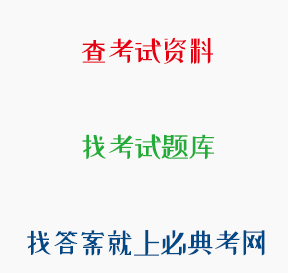正确答案: B
缺乏团结协作精神
题目:新入职的王老师想去优秀教师李老师班上听课,学习经验。李老师笑容可掬地说:"你是名牌大学毕业的高材生,我的课上得不好,就不要去听了。"这表明李老师()
解析:《中小学教师职业道德规范》(1997年修订)"团结协作"要求,教师要团结协作,谦虚谨慎、尊重同志,相互学习、相互帮助。题目中李老师的做法缺乏团结协作的精神。故选择B。
查看原题 查看所有试题
学习资料的答案和解析:
[单选题]下列古代人物中不属于唐宋八大家的是( )。
黄庭坚
解析:黄庭坚,书法传世,为"宋四家"之一(苏轼、黄庭坚、米芾、蔡襄)。代表作品:《山谷词》。黄庭坚不是唐宋八大家之一,故选择C。唐宋八大家是唐宋时期,八大诗人散文作家的合称,即唐代的韩愈、柳宗元和宋代的苏洵、苏轼、苏辙、欧阳修、王安石、曾巩。韩愈:世称"韩昌黎"、"昌黎先生"。唐代古文运动的倡导者,"唐宋八大家"之首,与柳宗元并称"韩柳"。主要作品:《论佛骨表》《师说》《进学解》等。其中《师说》选入中学课文。柳宗元:世称"柳河东"、"河东先生。唐代古文运动的倡导者。主要作品:《永州八记》《柳河东集》《柳宗元集》等。其中《捕蛇者说》(选自《柳河东集》)选入中学课文。苏洵、苏轼、苏辙:北宋文学家、思想家,政治家。号称"三苏"(苏洵是苏轼、苏辙的父亲,苏轼是苏辙的哥哥),四川眉州人("眉州东坡"的眉州),世人称"一门三父子,峨眉共比高"。苏洵,号老泉,字明允。代表作品《六国论》等。苏辙,自号颍滨遗老,字子由。苏轼,号东坡先生("东坡肘子"的东坡),文学、书法(苏轼与黄庭坚、米芾和蔡襄,并称"宋四家")艺术成就斐然。很多作品耳熟能详,选入课文的作品有:古文《石钟山记》;诗歌《赤壁赋》("清风徐来,水波不兴")、《后赤壁赋》、《题西林壁》("不识庐山真面目,只缘身在此山中")、《饮湖上初睛后雨二首》("欲把西湖比西子,淡妆浓抹总相宜");词《江城子·十年生死两茫茫》("十年生死两茫茫,不思量,自难忘")、《水调歌头·明月几时有》("明月几时有,把酒问青天")、《定风波·莫听穿林打叶声》("竹杖芒鞋轻胜马,一蓑烟雨任平生")、《念奴娇·赤壁怀古》("但愿人长久,千里共婵娟")。著名书法作品有:《赤壁赋》、《江上帖》、《寒食帖》(又称《黄州寒食诗帖》,天下第三行书)等。欧阳修,字永叔,号醉翁、六一居士。北宋文学家、政治家。领导了北宋诗文革新运动。很多作品耳熟能详,选入课文的作品有:《醉翁亭记》("醉翁之意不在酒,在乎山水之间也"),《卖油翁》("我亦无他,唯手熟尔。")王安石,字介甫,号半山,北宋政治家,改革家(北宋王安石变法),文学家。著名作品,选入课文的作品有:《伤仲永》("泯然众人矣")、《游褒禅山记》、《登飞来峰》("不畏浮云遮望眼,自缘身在最高层")、《泊船·瓜洲》("春风又绿江南岸,明月何时照我还")、《梅花》("遥知不是雪,为有暗香来")、《元日》("干门万户瞳瞳日,总把新桃换旧符")、《桂枝香·金陵怀古》("至今商女,时时犹唱,后庭遗曲")。曾巩,世称"南丰先生"。著名作品《墨池记》("临池学书,池水尽黑")。
[单选题]Word中,双击"格式刷",可将格式从一个区域一次复制到的区域数目是( )。
多个
解析:在单击"格式刷"时,可复制的区域数目是一次;双击"格式刷",则可多次复制。故选择C。
[单选题]世界上最早的专门论述教育问题的著作是中国古代的( )。
《学记》
解析:考查古代的教育著作。《学记》是我国也是世界上最早的专门论述教育问题的著作。《孟子》是古代的"四书"之一,南宋时,朱煮将它与《论语》《大学》《中庸》合为"四书";《论语》主要记载孔子及其弟子的言行,它较为集中地反映了孔子的思想。《庄子》又名《南华经》,是道家经文,为战国早期庄子及其后学所著。
[单选题]地方课程属于( )。
二级课程
解析:新课程改革改变课程管理过于集中的状况,实行国家、地方、学校三级课程管理,增强课程对地方、学校及学生的适应性。国家是一级课程,地方是二级课程,学校是三级课程。
[单选题]为了让学生区分"put"和"but"的不同,英语老师特别用不同颜色标出"p"和"b",这是运用了( )规律。
感觉对比
解析:不同刺激作用于同一感觉器官,使感受性发生变化的现象叫感觉对比。老师用不同颜色标出两个单词的不同点,对学生的视觉产生不同的刺激。
[单选题]"知之深,则爱之切"说明情感过程依附于( )。
认识过程
解析:这句话在心理学理论中说明认识过程与情感过程是密切联系的,认识过程是产生情感的前提和基础;情感过程又对认识过程具有反作用。
[单选题] The use of deferential language is symbolic of the Confucian ideal of the woman, which dominates conservative gender norms in Japan. This ideal presents a woman who withdraws quietly to the background, subordinating her life and needs to those of her family and its male head. She is a dutiful daughter, wife, and mother, master of the domestic arts. The typical refined Japanese woman excels in modesty and delicacy; she "treads softly in the world," elevating feminine beauty and grace to an art form.
Nowadays, it is commonly observed that young women are not conforming to the feminine linguistic ideal. They are using fewer of the very deferential "women's" forms, and even using the few strong forms that are known as "men's." This, of course, attracts considerable attention and has led to an outcry in the Japanese media against the defeminization of women's language. Indeed, we didn't hear about "men's language" until people began to respond to girls' appropriation of forms normally reserved for boys and men. There is considerable sentiment about the "corruption" of women's language-which of course is viewed as part of the loss of feminine ideals and morality-and this sentiment is crystallized by nationwide opinion polls that are regularly camed out by the media.
Yoshiko Matsumoto has argued that young women probably never used as many of the highly deferential forms as older women. This highly polite style is no doubt something that young women have been expected to "grow into"-after all, it is assign not simply of femininity, but of maturity and refinement, and its use could be taken to indicate a change in the nature of one's social relations as well. One might well imagine little girls using exceedingly polite forms when playing house or imitating older women-in a fashion analogous to little girls' use of a high-pitched voice to do "teacher talk" or "mother talk" in role play.
The fact that young Japanese women are using less deferential language is a sure sign of change-of social change and of linguistic change. But it is most certainly not a sign of the "masculization" of girls. In some instances, it may be a sign that girls are making the same claim to authority as boys and men, but that is very different from saying that they are trying to be "masculine." Katsue Reynolds has argued that girls nowadays are using more assertive language strategies in order to be able to compete with boys in schools arid out. Social change also brings not simply different positions for women and girls, but different relations to life stages, and adolescent girls are participating in new sub-cultural forms. Thus what may, to an older speaker, seem like "masculine" speech may seem to an adolescent like "liberated" or "hip" speech.
The highly polite style ________ according to Yoshiko Matsumoto.
is viewed as a sign of their maturity
解析:1.细节题。文中第一段提到了典型的日本女人受到孔子思想的影响,谦虚、优雅;只有 C选项不是日本女人的典型特征,故选C。
2.细节题。文中最后一段提到“The fact that young Japanese women are using less deferential language is a sure sign of change”即年轻女人使用的语言不再那么顺从,与B选项吻合,故选B。
3.细节题。文中第二段提到“This,of course,attracts considerable attention and has led to an outcry in the Japanese media against the defeminization of women's language”即日本媒体强烈反对女性用语中的去女性化现象。故选A。
4.细节题。文中第三段提到“…it is assign not simply of femininity, but of maturity and refinement, and its use could be taken to indicate a change in the nature of one's social relations as well.”即高度有礼貌的语言被视为一种成熟和文雅,选项C符合题意。
5.细节题。文章最后一段提到“Katsue Reynolds has argued that girls nowadays are using more assertive language strategies in order to be able to compete with boys in schools and out"选项A符合题意,故选A。
[单选题]当前我国中学开设的数学、语文、英语等课程属于
学科课程
解析:学科课程也称分科课程,采用单科形式,强调不同学科门类之间的相对独立性,强调一门学科的逻辑体系的完整性,其课程的主导价值是使学生获得逻辑严密和条理清晰的文化知识。数学、语文、英语等课程属于分科课程。故选A。
[单选题]The man________the dark glasses fled away from the spot very rapidly.
in
解析:本题考查介词用法。分析句子成分可知, the dark glasses作后置定语,修饰the man,该句意思是“那个戴墨镜的男人快速地逃离了现场”。介词in除了表示“在……里面”,还表示穿戴,不仅可用于穿衣,还可以表示戴眼镜、戴帽子、留辫子等。如:a man in glasses戴眼镜的男人,aboy in hat戴帽子的男孩,a girl in pigtails梳辫子的姑娘。

 川公网安备 51012202001360号
川公网安备 51012202001360号